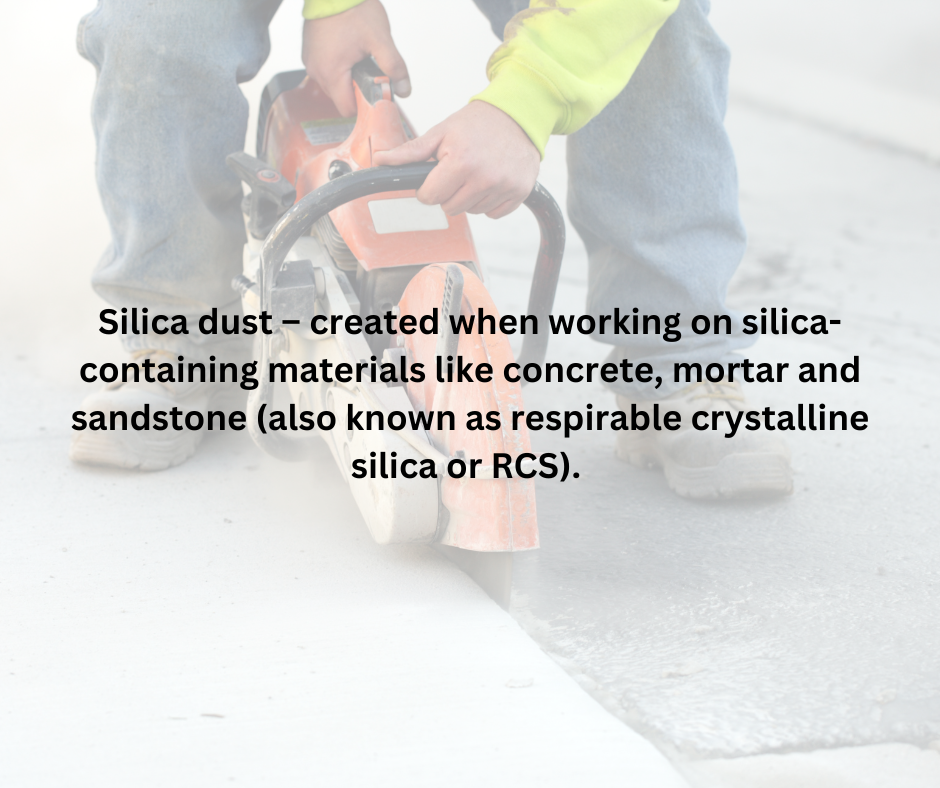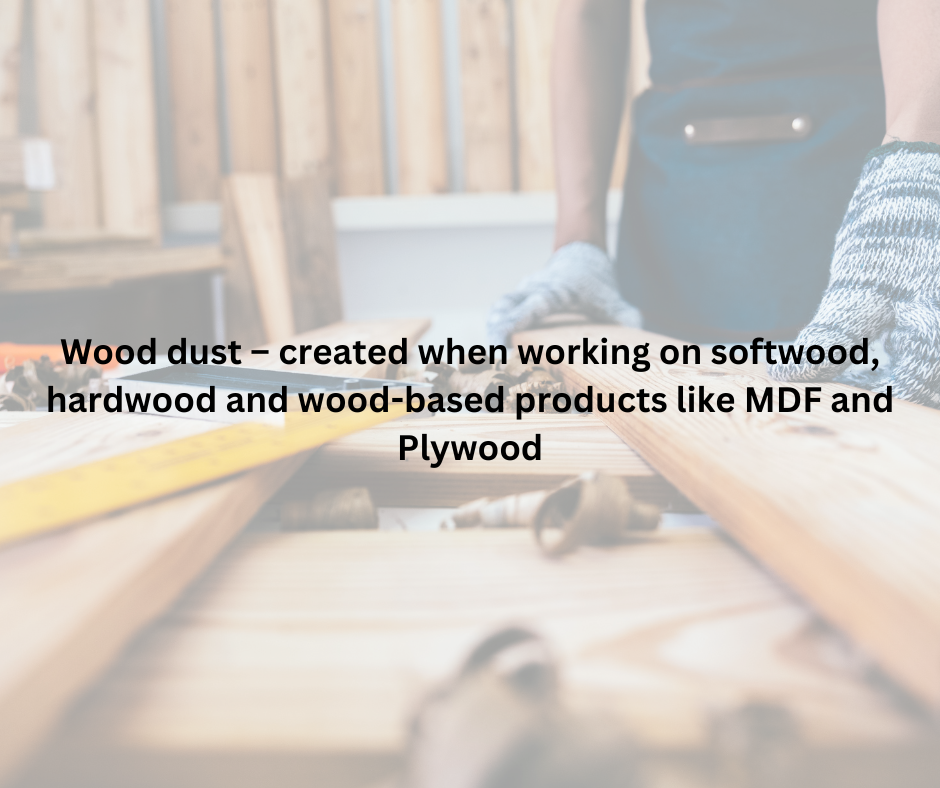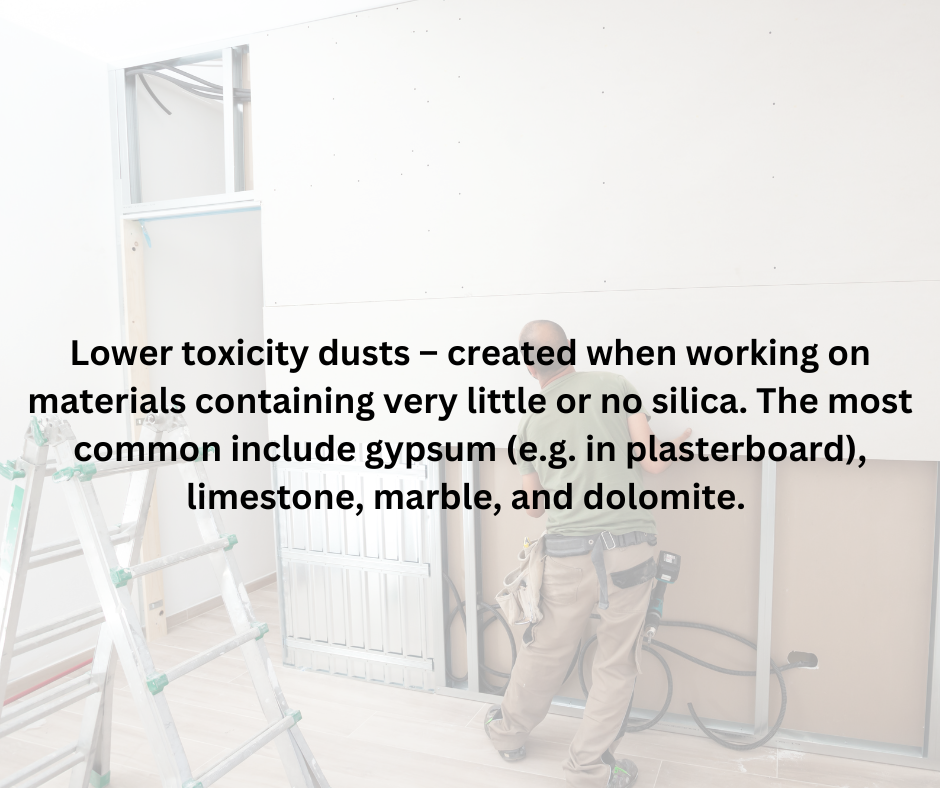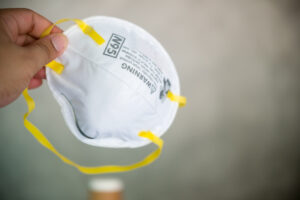Dust in the Workplace
What causes dust and why is it potentially harmful?
What causes dust and why is it potentially harmful?
Dust in the workplace may be found or generated in many different fabrics of materials used in the construction industry. It is found in soil, decaying vegetation and in the air we breathe. When left undisturbed, dust is safe, but during work activities the dust particles can become airborne and can then be inhaled or ingested.



The employer must apply a sensible approach to ensuring the various types of dust are adequately controlled and, if practicable in certain cases, eliminated. When developing control measures management must plan and assess the works and identify the route of entry if there is a potential exposure.
Exposure can occur through: Inhalation, skin, or ingestion.
When using a substance, its physical, chemical, and infectious properties have a great bearing on which route of exposure, or combination of routes, is most dangerous. If there is no exposure there is no risk to health; but usage nearly always leads to some exposure.
So, consider the following: the health effects that the substances can cause, the way the substances are used, the degree of exposure, and how exposure occurs.
An adequate risk assessment considers all routes by which the substance might enter the body and, in the case of direct contact, how a substance might affect the skin or eyes.
Where employees and subcontractors are required to undertake activities that produce dust, ensure the risk of dust exposure is adequately controlled to ensure compliance with regulations and guidance such as:
Eliminating or avoiding the need for producing dust.
Undertaking a review of the materials to be used in their activities and consider if less harmful materials can be used.
For those activities where dust remains, assess the risks.
Risk assessments shall be conducted by trained and competent staff. This should be senior managers or supervisors who should assess the task with the employee and the effective controls that need to be applied. Most assessments will require an observation to identify ways to make an activity easier and less risky E.g., making the activity less physically demanding, or using automated equipment such as an autofeed device on a core driller. In doing so they will also identify any other existing controls and whether these are adequate.
All employees must identify the dust-producing activities in the risk assessment process. High dust levels and exposure to them can be caused by one or more of the following:
Task – the more energy the work involves, whether manual, mechanical or powered, the bigger the risk.
High-energy tools like Stihl saws, grinders, sanders and grit blasters produce a lot of dust in a very short time.
Work area – the more enclosed a space, the more the dust will build up. However, do not assume that dust levels will be low when working outside with high-energy tools.
Time – the longer the work takes the more dust there will be.
Frequency – regularly doing the same work day after day increases the risks.
All employees have a duty to take care of their own health and safety at work. They must:

The most common misconception in risk control is that personal protective equipment (PPE) is the first and most important measure; this is wrong. PPE, or in this case RPE, is the last line of protection. If the safety of an operative relies solely on RPE then the assessor needs to be able to justify their reasoning.
All contractors whose work involves generation of dust are asked to ensure that their risk assessment/method statements reflect the risks involved. Any RPE issued must be ‘fit for purpose’ with operatives having had appropriate training in its safe use and it must be adequate for the amount and type of dust.
RPE has an assigned protection factor (APF) which shows how much protection it gives the wearer. This is commonly translated to an FFP and number. FFP stands for “Filtering Facepiece”. The associated number (1 to 3) describes the protection level of the mask. The higher the number, the more efficiently the mask filters particles such as dust, fumes or solvent aerosols from the air. Therefore, FFP3 respiratory masks may be used against more harmful substances and at higher concentrations than FFP1 and FFP2 respiratory masks.
RPE must be suitable for the work. Disposable masks or half masks can become uncomfortable to wear for long periods especially if having to wear other PPE such as safety goggles and/or hearing protection. Powered or air-fed RPE helps minimise this. Consider it when people are working for more than an hour without a break.
RPE is only suitable when:
Local Exhaust Ventilation (LEV). This can be a fixed installation or a mobile unit deployed within a commercial premises and consists of several individual parts – the tool, capturing hood, extraction unit and collection chamber and be capable of extracting output from several appliances. These would typically be used in a joinery or a prefabrication workshop where particulates are contained in silos or bags rather than ejected into the atmosphere.
There are also mobile LEVS available, for all types of applications. There are wheeled units for larger operations or small portable units which can be simply an extraction fan with a flexible flue hose to direct dust (or fumes) away from the operative and diffused into the atmosphere.
Note. LEV systems must undergo a thorough examination and test (TExT) at least every 14 months and the results recorded and kept for five years.
Health and Safety at Work Act 1974
Management of Health and Safety at Work 1999
Control of Substance Hazardous to Health Regulations 2002
The Construction (Design and management) Regulations 2015
Use the right size of building materials so less cutting or preparation is needed. (These could be pre-cut from the supplier).
Use silica-free abrasives to reduce the risks when blasting.
Use a less powerful tool – e.g. a block splitter instead of a Stihl saw.
Consider a different method of work altogether – e.g. a direct fastening system.
Water suppression systems can be very effective and inexpensive to deploy. They can be fitted to tools and usually involve spraying water directly onto the material. The water spray is supplied via a mains water supply or a pressurised water bottle. Water spray may not always be appropriate as they are only suitable for tools powered by combustion engines or compressed air. (I.e., it should not be used on saws that are electronically operated).
Demolition contractors will often deploy water cannons to spray water over large areas to reduce dust spreading via the wind to neighbouring businesses or households.
Water damping on its own may not reduce exposure enough, in which case respiratory protection (RPE) has to be provided as well.
Controlling construction dust with on-tool extraction https://www.hse.gov.uk/pubns/cis69.pdf
Construction dust https://www.hse.gov.uk/pubns/cis36.pdf
Controlling airborne contaminants at work https://www.hse.gov.uk/pubns/priced/hsg258.pdf